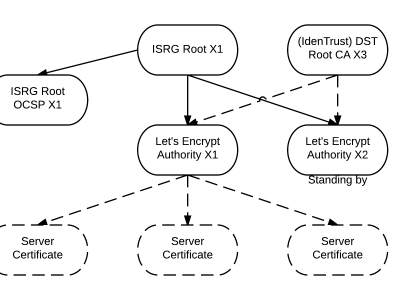Linux中国
Linux终端的乐趣之把玩字词计数

在使用的脚本来分析文本文件之前,我们必须有一个文本文件。为了保持一致性,我们将创建一个文本文件,man命令的输出如下所述。
$ man man > man.txt
以上命令是将man命令的使用方式导入到man.txt文件里。
我们希望能得到最平常的单词,对之前我们新建的文件执行如下脚本。
$ cat man.txt | tr ' ' '�12' | tr '[:upper:]' '[:lower:]' | tr -d '[:punct:]' | grep -v '[^a-z]' | sort | uniq -c | sort -rn | head
Sample Output
7557
262 the
163 to
112 is
112 a
78 of
78 manual
76 and
64 if
63 be
上面的脚本,输出了最常使用的十个单词。
如何看单个的字母呢?那就用如下的命令。
$ echo 'tecmint team' | fold -w1
Sample Output
t
e
c
m
i
n
t
t
e
a
m
注: -w1只是设定了长度
现在我们将从那个文本文件中掰下来的每一个字母,对结果进行排序,得到所需的输出频率的十个最常见的字符。
$ fold -w1 < man.txt | sort | uniq -c | sort -rn | head
Sample Output
8579
2413 e
1987 a
1875 t
1644 i
1553 n
1522 o
1514 s
1224 r
1021 l
如何区分大小写呢?之前我们都是忽略大小写的。所以,用如下命令。
$ fold -w1 < man.txt | sort | tr '[:lower:]' '[:upper:]' | uniq -c | sort -rn | head -20
Sample Output
11636
2504 E
2079 A
2005 T
1729 I
1645 N
1632 S
1580 o
1269 R
1055 L
836 H
791 P
766 D
753 C
725 M
690 U
605 F
504 G
352 Y
344 .
请检查上面的输出,标点符号居然包括在内。让我们干掉他,用tr 命令。GO:
$ fold -w1 < man.txt | tr '[:lower:]' '[:upper:]' | sort | tr -d '[:punct:]' | uniq -c | sort -rn | head -20
Sample Output
11636
2504 E
2079 A
2005 T
1729 I
1645 N
1632 S
1580 O
1550
1269 R
1055 L
836 H
791 P
766 D
753 C
725 M
690 U
605 F
504 G
352 Y
现在,我们有了三个文本,那就让我们用如下命令查看结果吧。
$ cat *.txt | fold -w1 | tr '[:lower:]' '[:upper:]' | sort | tr -d '[:punct:]' | uniq -c | sort -rn | head -8
Sample Output
11636
2504 E
2079 A
2005 T
1729 I
1645 N
1632 S
1580 O
下一步我们将会生成那些罕见的至少十个字母长的单词。以下是简单的脚本:
$ cat man.txt | tr '' '�12' | tr '[:upper:]' '[:lower:]' | tr -d '[:punct:]' | tr -d '[0-9]' | sort | uniq -c | sort -n | grep -E '..................' | head
Sample Output
1 ──────────────────────────────────────────
1 a all
1 abc any or all arguments within are optional
1 able see setlocale for precise details
1 ab options delimited by cannot be used together
1 achieved by using the less environment variable
1 a child process returned a nonzero exit status
1 act as if this option was supplied using the name as a filename
1 activate local mode format and display local manual files
1 acute accent
注: 上面的.越来越多,其实,我们可以使用.{10} 得到同样的效果。
这些简单的脚本,让我们知道最频繁出现的单词和英语中的字符。
现在结束了。下次我会在这里讲到另一个有趣的话题,你应该会喜欢读。还有别忘了向我们提供您的宝贵意见。
via: http://www.tecmint.com/play-with-word-and-character-counts-in-linux/
作者:Avishek Kumar 译者:MikeCoder 校对:wxy
本文转载来自 Linux 中国: https://github.com/Linux-CN/archive
对这篇文章感觉如何?
太棒了
0
不错
0
爱死了
0
不太好
0
感觉很糟
0
More in:Linux中国
Let's Encrypt 正式发布,已经保护 380 万个域名
由于 Let's Encrypt 让安装 X.509 TLS 证书变得非常简单,所以这个数量增长迅猛。
关于Linux防火墙iptables的面试问答
Nishita Agarwal是Tecmint的用户,她将分享关于她刚刚经历的一家公司(印度的一家私人公司Pune)的面试经验。在面试中她被问及许多不同的问题,但她是iptables方面的专家,因此她想分享这些关于iptables的问题和相应的答案给那些以后可能会进行相关面试的人。 所有的问题和相应的答案都基于Nishita Agarwal的记忆并经过了重写。 嗨,朋友!我叫Nishita Agarwal。我已经取得了理学学士学位,我的专业集中在UNIX和它的变种(BSD,Linux)。它们一直深深的吸引着我。我在存储方面有1年多的经验。我正在寻求职业上的变化,并将供职于印度的P
Lets Encrypt 已被所有主流浏览器所信任
旨在让每个网站都能使用 HTTPS 加密的非赢利组织 Lets Encrypt 已经得了 IdenTrust的交叉签名,这意味着其证书现在已经可以被所有主流的浏览器所信任。从这个里程碑事件开始,访问者访问使用了Lets Encrypt 证书的网站不再需要特别配置就可以得到 HTTPS 安全保护了。 Lets Encrypt 的两个中级证书 ...
SSL/TLS 加密新纪元 – Lets Encrypt
根据 Let's Encrypt 官方博客消息,Let's Encrypt 服务将在下周(11 月 16 日)正式对外开放。 Let's Encrypt 项目是由互联网安全研究小组(ISRG,Internet Security Research Group)主导并开发的一个新型数字证书认证机构(CA,Certificate ...




















